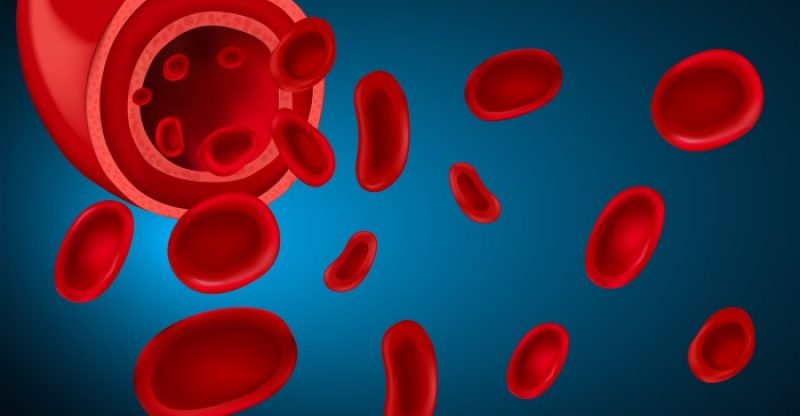Dangers of High or Low Monocytes
How many types of white blood cells are there?
There are actually five main types, including neutrophils, eosinophils, basophils, lymphocytes, and monocytes.
Each of these blood cells plays an important role in the defense of the body against infection and disease.
However, you also want to make sure that none of these blood cell counts get out of whack.
Otherwise, you may run into a host of issues and disorders.
High and low monocytic cells should be monitored at every age through a simple blood test.
Doctors can help diagnose larger issues just by looking at your white blood cell counts.
You should always talk to a doctor before treating any symptoms from health effects related to high and low white blood cell counts.
This article looks at all of the different ways that monocytic cells help heal the human body after it experiences growth or gets damaged by an injury.
Monocytic cells also play one of the most important roles in keeping your body’s immune system strong.
What are Monocytes?
Monocytic cells are the largest of all the different white blood cells or leukocytes.
These white blood cells play an important role in defending the human body against inflammation and germs.
Only 2-10% of white blood cells can be a monocyte cell (1).
As immune cells, monocytic cells circulate through the blood for several days before they enter tissue, where they become macrophages and dendritic cells.
These white blood cells then protect against bacterial, fungal, viral, and protozoal infections.
This is why doctors monitor white blood cell counts so closely when you have a serious infection (2, 3).
These cells will kill microorganisms, remove foreign particles and dead cells, and boost your immune system’s response to threats.
These white blood cells are also involved in the development of several inflammatory diseases like arthritis and atherosclerosis (4).
Eventually, monocytic cells will mature into macrophages, which act like scavengers in the immune system.
If you have abnormalities in the function of your monocytic cells and macrophages, then you may experience the buildup of fatty or lipid debris within your body’s cells, resulting in disorders like Gaucher and Niemann-Pick disease.
If your macrophage cells aren’t working correctly, then you may experience susceptibility to other infections.
Monitoring your monocytic cell levels is important, as it can lead to the diagnosis of larger disorders causing symptoms.
If you are experiencing any of these symptoms, you should check with your doctor on what to do to get help.
The diagnosis comes from blood testing, including a complete blood count test.
This test may show signs of infection by providing the monocytic cell count in your bloodstream.
You may also see signs of an autoimmune disorder.
Recent research has shown there are multiple ways to control your monocytic levels, whether you want them to be higher in order to fight infection or lower to aid in the decreased risk of a heart attack from coronary artery disease.
How They are Produced in the Body
Bone marrow is responsible for the production of hematopoietic stem cells.
In adults, monocytic cells are mainly produced in the bone marrow.
All blood cells originate from these parent hematopoietic stem cells.
This process of producing these cells is called myelopoiesis.
Monocytic levels account for about 1-10% of the circulating white blood cells.
This equals 200 to 600 monocytic levels per microliter of blood.
There are some factors that control these processes, including:
- Transcription factor – PU.1 (6).
- Cytokines like SCF or stem cell factor, GM-CSF or granulocyte-macrophage-colony-stimulating factor, M-CSF or macrophage colony-stimulating factor, or IL-6, and IFN-gamma (7, 8).
Monocytic cells live for an average of just 3 days before undergoing what is a called a “programmed cell death” (9).
However, they may live longer in the human body when there is inflammation.
Cell death will then occur after inflammation goes away (10).
Optimal Range
As monocytic cells are necessary to fight certain infections and help other white blood cells remove dead or damaged tissue, it is important that both children and adults have the right amount of monocytic cells in the bloodstream.
The balance of monocytic levels is important to maintaining a healthy body.
Monocytic cell counts should be between 0.2 and 0.8×10(9)/L in adults (11).
Children have different ranges that depend on age.
However, monocytic cells should be between 0.5 to 1.8×10(9)/ in newborns.
That should gradually decrease to 0.2 to 0.8×10(9)/L in young adults.
Increased numbers of high monocytes in the blood can occur when there are infections and autoimmune disorders.
Doctors can do a blood test to check and see what your monocytic cell count is.
If you have a low number of monocytic cells, you may have a lower white blood count overall, or you may be dealing with a bone marrow disorder.
There are also disorders with the complete absence of monocytic cells.
You can see below for conditions associated with high and low levels of monocytic cells.
Conditions Associated with High Monocytes
If you have a higher level of these white blood cells in the bloodstream, you have more than 0.8 x 10(9)/L for adults.
There are a number of conditions associated with higher levels of these white blood cell types, including the following:
Hematologic malignancies such as myelodysplastic disorder, chronic myelomonocytic leukemia, Hodgkin and non-Hodgkin lymphoma, and acute monocytic leukemia.
Infections like bacterial endocarditis, tuberculosis, viral infections, brucellosis, malaria, and syphilis.
Cancers, specifically of the ovary, breast, and rectum.
Autoimmune diseases such as:
- Systemic lupus erythematosus
- Inflammatory bowel disease
- Rheumatoid arthritis
- Sarcoidosis
- Depression
- HIV infection
- Childbirth
- Obesity
- Severe pneumonia
- Alcoholic liver disease
- Heart attack
- Appendicitis
Health Effects of Having a High Count
Low or high numbers of absolute monocytic cells are not associated with any symptoms.
However, there are some recognizable symptoms of disorders that cause high monocytic cells.
Monocytosis Increases the Chance of Atherosclerosis
Monocytic cells and macrophages can contribute to the development and severity of atherosclerosis or the hardening of the arteries.
Over time, atherosclerosis can lead to stroke, heart attack, and heart failure (12).
As monocytic cells gather in blood vessels, this collection develops into atherosclerotic plaque as well, which can rupture and cause a blockage in blood vessels.
People with hardened arteries typically have a higher count of absolute monocytic cells in their bloodstream.
It is one of the ways to identify the condition from blood tests (13, 14, 15).
Higher Risk of Inflammation in Diabetes
Recent research shows that absolute monocytes definition were significantly increased in subjects with diabetes.
However, diabetes did not affect the number of circulating white blood cells overall (16).
Monocytic cells have been linked to higher inflammation in diabetes patients.
Studies show that monocytic cells actually secrete higher levels of TNF-alpha, IL-1, and IL-6.
This can occur in both Type 1 and Type 2 diabetes (17).
Risk of Death Increased for Elderly
In elderly patients, absolute monocytes need to be checked regularly, as higher levels are linked to cardiovascular- and cancer-related deaths.
Healing after Heart Attacks
Monocytic cells help repair and remove damaged and dead heart cells, which is essential to healing after incurring damage from a heart attack.
Conditions Associated with Low Monocytes (Monocytopenia)
When levels of monocytic levels are considered low, the number of monocytic cells circulating in the blood drops to less than 0.2×10(9)/L in adults.
A low number of monocytic cells may be caused by any condition that decreases overall white blood cell count.
These include chemotherapy, bloodstream infection, and bone marrow disorder.
Low monocytes are also associated with skin infections and HPV (18).
Following are all of the conditions associated with monocytopenia:
- Aplastic anemia
- Severe burn injuries
- Leukemia
- MonoMAC Syndrome
- Rheumatoid arthritis
- HIV infection
- Systemic lupus erythematosus
- Vitamin B12 deficiency
- Corticosteroid therapy (transient monocytopenia)
- Radiation therapy
- Administration of INF-alpha and TNF-alpha
Your doctor can help diagnose low monocytic cells with a simple blood test.
You should check your monocytic level if you experience symptoms from the above conditions.
Health Effects of Having a Low Monocyte Count
Blood disorders like monocytopenia or MonoMAC syndrome can cause a variety of issues, but there are no symptoms regularly found with low monocytic cell counts.
However, patients may see signs of infection, as normal monocytic cell counts would typically be able to repair and remove this dead tissue.
These are other health effects to watch out for as you learn more about your monocytic cell health.
Lowers the Risk of Cardiovascular Disease
A higher white blood cell count contributes to the hardening of the arteries, which increases the risk for cardiovascular disease.
However, when white blood cells are low, patients have a lower cardiovascular risk.
Some treatments will look to lower monocytic cells in patients where arteries are clogged.
Patients who are at risk for cardiovascular diseases may need additional treatments.
Susceptibility to Infection
Since white blood cells assist in the fight against infections, lower monocytic levels are often found in patients experiencing a mycobacterial, fungal, or human papillomavirus infection.
MonoMAC syndrome sufferers also have an increased risk of infection (21).
Risk of Hematologic Disorders
Many patients who have lower monocytic levels have a higher risk for the development of hematologic disorders, which are cancers of the blood cells.
These include acute myelogenous leukemia, myelodysplasia, chronic myelomonocytic leukemia, and lymphomas (22).
Cervical Cancer Risk
In women, certain types of progressive monocytopenia can cause immunodeficiencies and leave patients susceptible to constant HPV infections, which can cause cervical cancer (23).
Ways to Increase Monocytic Levels
If you want to increase the white blood cell counts in your blood, you can simply increase the overall white blood cell count through methods like growth hormone injections.
There are a number of ways to increase naturally these white blood cell levels, as well.
Long-term increased monocytic cell production may have some drawbacks, as explained below.
Acute Strenuous Exercise
You can vary the way you exercise to increase monocytic levels.
For example, during the first minutes of high-energy exercise, monocytic cells will rapidly increase in the blood. White blood cell levels tend to drop after the strenuous activity is complete (24).
Cold Exposure
If you are exposed to cold for long enough, your levels of monocytic cells will start to rise, through the “fight or flight” nervous system response (25).
Sauna
Did you ever wonder why athletes frequently use saunas?
This is because it helps in the production of white blood cells and monocytic cells used to repair the body.
Overheating the human body can lead to an elevated level of monocytic cells (26).
Growth Hormone
Patients may receive a growth home injection to increase white blood cell counts, which also increases the levels of white blood cells in the bloodstream (27).
Menopause
One of the effects of menopause is increased monocytic cell production.
However, if the patient decides to do estrogen replacement therapy, monocytic levels may decrease rapidly.
Vitamin B12
Recent research shows that vitamin B12 can increase the white blood cell count, specifically in rats that were experiencing protein deficiencies.
However, vitamin B12 supplements did not change white blood cell counts in rats that had a normal level of protein (28).
Leptin
Human leptin can increase monocytic growth and production of a cytokine.
This is due to leptin being a pro-inflammatory cytokine (29).
Testosterone
Another study found that injections of testosterone into mice subjects were able to increase the monocytic levels, as well as granulocytes and large lymphocytes in the blood (30).
Vitamin C
Research has found that vitamin C can also change immunity by inhibiting the programmed death that monocytic cells experience after entering the liver and other organs (31).
Calcitriol (Vitamin D)
Vitamin D3, or calcitriol, can also increase the levels of human monocytic cells in the bloodstream (32).
Garlic
Did you know that eating garlic will increase your white blood cell count?
Rats that were fed garlic had significantly higher monocytic cell levels, as well as those of lymphocytes and neutrophils.
Chronic Alcoholism
Drinking alcohol to the point of consumption can cause a leaky gut, which increases lipopolysaccharides and lets Gram-negative bacteria in the gut.
This causes inflammation.
Acute alcohol consumption will typically take away the inflammation from LPS.
This leads to a gradual increase of monocytic cells.
The body’s state of inflammation will typically increase after this point (34).
If prolonged alcohol consumption continues, it can result in an increase in TNF-alpha production by white blood cells (35).
Ways to Decrease Monocytic Levels
Acute Alcoholism
Monocyte functions can be influenced by acute alcohol intake due to its effect on the immune system (36).
Studies show that acute alcohol consumption can lower inflammation in response to a gut experiencing higher LPS (37).
If you drink 1 to 2 drinks per day, you may have a slightly decreased monocytic cell production of inflammatory cytokines, IL-1beta, and TNF-alpha, with an increased IL-10 production, as well.
All of these may contribute to the beneficial effects on people with atherosclerosis when alcohol is used moderately.
Daily Exercise
As you exercise, your body develops more anti-inflammatory bodies.
Studies have shown that monocytic cells may also decrease in overweight sedentary women after doing a six-week course of cycling.
And monocytic cell counts were linked to reduced triglyceride levels, decreased body mass index, and increased insulin sensitivity (38).
Mediterranean Diet
Mediterranean diets have been found to protect against inflammation caused by white blood cells (39).
This is because the Mediterranean diet consists of seeds, vegetables, nuts, fruits, and whole grains.
In addition, the Mediterranean diet also contains an abundance of monounsaturated fats, due to the increased use of olive oil.
Weight Loss
In patients who are obese, weight loss also led to a reduced amount of white blood cells and neutrophil counts.
This decrease also helped diabetic patients, as circulating white blood cells were linked to better insulin sensitivity, as well (40).
Omega-3 Fatty Acids
When you eat omega-3 fatty acids like those found in fish such as mackerel and salmon, you are also protecting against atherosclerosis and heart disease.
You can also take fish oil supplements (41).
In fact, those who did take fish oil supplements had a lower risk of inflammation in the blood vessels caused by white blood cells.
However, taking this supplement did not help patients who were already taking medications for peripheral artery disease (42).
Cortisol and Glucocorticoids
Doctors often suggest cortisol treatments for those with higher monocytic levels.
Cortisol treatments decreased monocytic levels by 90% up to 6 hours after treatment.
The treatment continued for another 24 hours.
White blood cell levels lowered to normal levels after 24 to 72 hours.
This was due to the redistribution of monocytic cells (43).
Infliximab
Infliximab is an immune-suppressing drug for the treatment of several inflammatory diseases such as ulcerative colitis, rheumatoid arthritis, and Crohn’s disease.
Infliximab is known to kill monocytic cells, which reduces inflammation in patients with chronic inflammatory diseases (44, 45).
Estrogen and Progesterone
Estrogen, as well as progesterone, can decrease monocytic cell count.
This may be the reason that cell-mediated immunity is increased in pregnant women.
Dos and Don’ts
Monocytic cells are a type of white blood cell that fights certain infections and assists white blood cells in removing dead or dying tissues, as well as destroying cancer cells and increasing immunity against foreign bodies.
Monocytic cells are created in your body’s bone marrow and enter the blood, where they typically account for 10% of circulating white blood cells.
Increased numbers of white blood cells in the blood can occur in response to infections, autoimmune disorders, and certain cancers.
Lower levels of monocytic cells can be caused by other diseases that would lower white blood cell counts overall.
You will see a lower number of white blood cells in those who have certain skin infections, like human papillomavirus infection or HPV.
Heart disease and atherosclerosis are two issues that patients should be concerned with if they have higher monocytic levels.
You can increase Omega-3 fatty acids to help protect against these illnesses.
Here are some quick dos and don’ts as you learn more about monocytic levels in your body:
- Talk to your doctor about monocytic levels and symptoms of any disorders that you are experiencing related to blood disorders and diseases.
- Monitor your cholesterol levels and monocytic levels to ensure that you are not at risk of coronary artery disease.
- Test your monocyte count regularly as you grow older, to ensure that you are not at risk for any infections or blood disorders.
- Exercise regularly to keep your monocytic levels balanced. If you do strenuous exercise, you may increase the levels of monocytic cells in your body, whereas steady exercise will lead to decreased levels of monocytic cells.
- Sit in a sauna to increase white blood cell counts and monocytic cells after strenuous exercise, to help repair the body’s tissues.
- Use growth hormone injections to increase white blood cell counts.
- Avoid estrogen replacement therapy during menopause if you want to maintain your monocytic cell levels, or talk to your doctor about how to balance monocytic cells with estrogen therapy.
- To help maintain white blood cell counts, take certain supplements like vitamin D, vitamin C, fish oil, and calcitriol.
- Treat insulin sensitivities if diabetic through weight loss, which significantly reduces white blood cell counts and neutrophil counts, leading to a decrease in the circulating monocytic cells that are linked to insulin sensitivity.
- Monitor levels of estrogen and progesterone, as increased estrogen may be the reason for low monocytic cell counts and may cause an increase in infection.
- Get a cortisol shot if you need to decrease quickly the number of monocytic cells in the bloodstream, mainly in the case of artery disease.
- Increase the number of omega-3 fatty acids to protect against heart disease and atherosclerosis.
- Eat a Mediterranean diet if you want to protect against the inflammation that can be caused by higher monocytic cell levels. This diet includes nuts, seeds, vegetables, olive oil, and whole grains.
FDA Compliance
The information on this website has not been evaluated by the Food & Drug Administration or any other medical body. We do not aim to diagnose, treat, cure or prevent any illness or disease. Information is shared for educational purposes only. You must consult your doctor before acting on any content on this website, especially if you are pregnant, nursing, taking medication, or have a medical condition.
HOW WOULD YOU RATE THIS ARTICLE?






